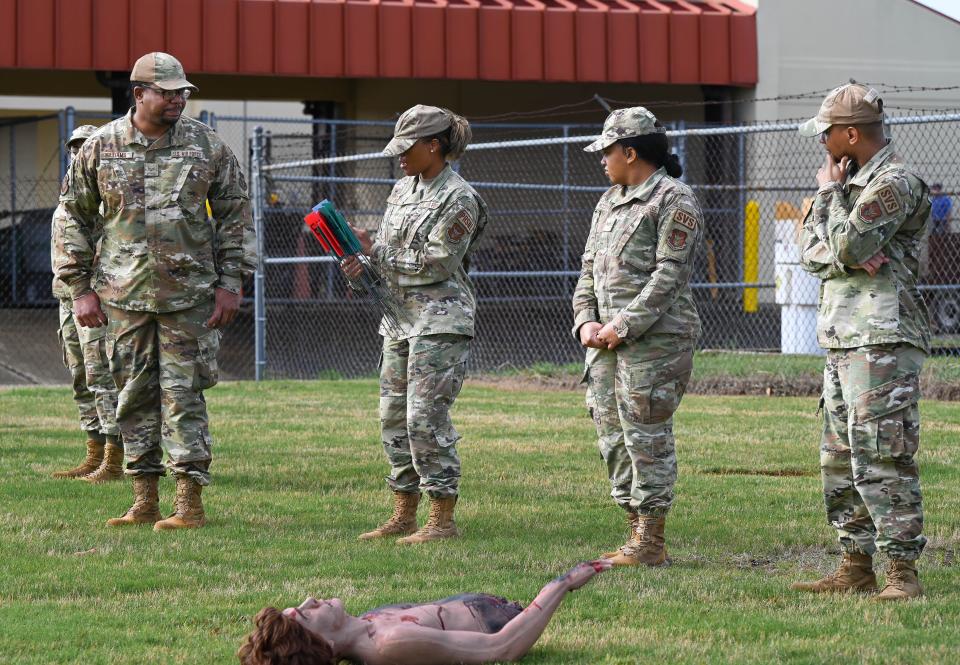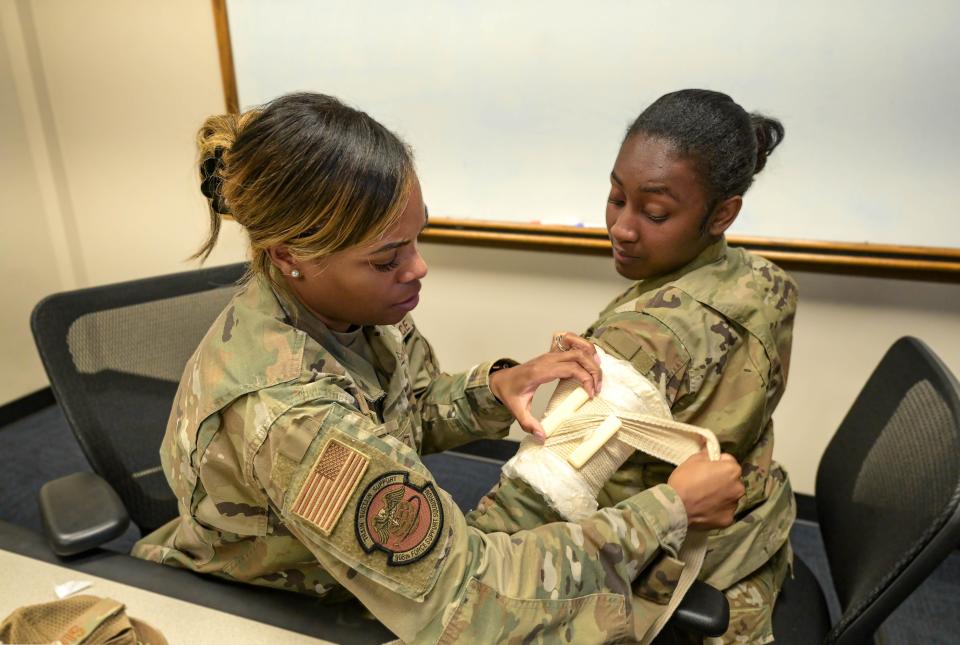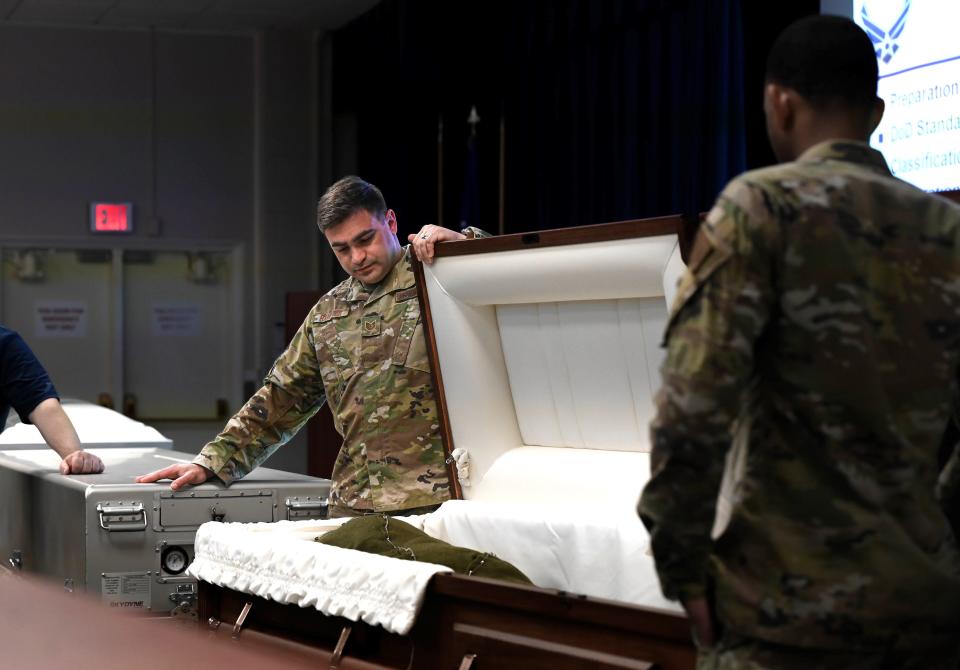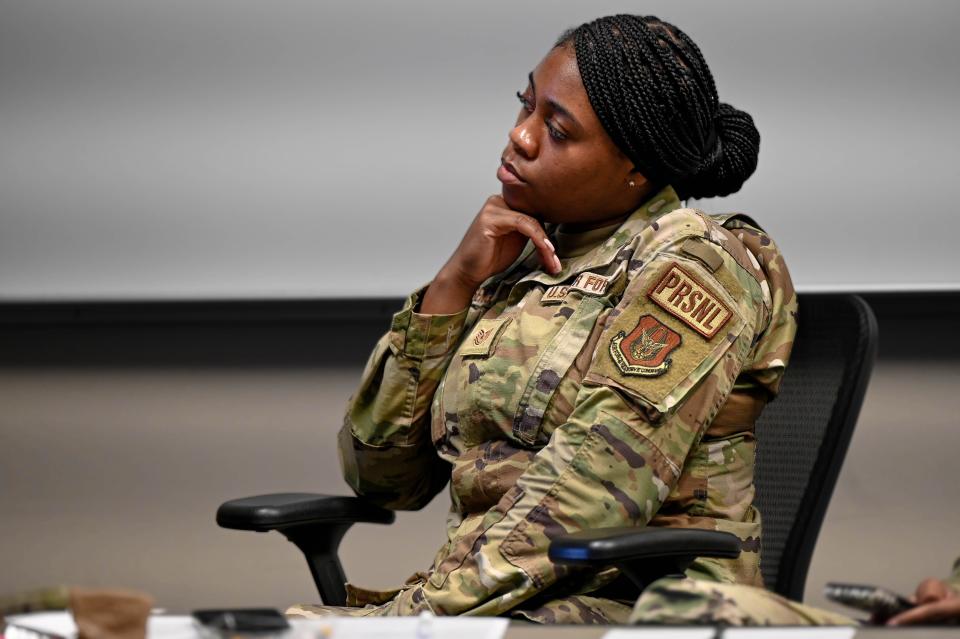The Force behind the 908th Force Support Squadron
Within the complexities of the Air Force, there exists a group of unsung heroes. They are there from the start to end of an Airman’s journey.
The Reserve Citizen Airmen of the 908th Force Support Squadron shoulder the weight of overseeing three crucial areas: sustainment, communication and personnel. They are the face, backbone and heartbeat of the 908th Airlift Wing.
To serve and support every member within their wing is not just a task, it's a sacred duty. It helps to have legacy leaders with the grace, experience and dedication to follow behind.

Lt. Col. Tyisha Owens is one of those leaders.
Owens has experience that spans a variety of assignments at every level of the Air Force from squadron to headquarters and has tirelessly worked to cultivate a culture of continuous learning and development across each section since assuming command of the 908th FSS in January 2023.
Alongside other senior leaders in the squadron, she orchestrated a five-day annual tour training session for more than 50 squadron members. From April 8 to 12, 2024, they embarked on a journey through a plethora of training requirements, delving into home station readiness, deployment preparedness, agile combat employment and Ready Airman Training.

“We have two goals we need to accomplish with each unit training assembly. It's having our doors open for the customers to service what they need, but then also getting our readiness and training done,” shared Owens. “My thought process into scheduling something like this was to find an opportunity to bring everyone in here with dedicated and uninterrupted time to be able to focus on something that we don't get that opportunity to do during the [unit training assembly].”
Squadron members, many of whom are traditional reservists, appreciated the dedicated time, support and resources for training as did leaders, because it offered them a space to hold members accountable for taking care of what needs to be done.
"Normally we are rushing and trying to fit everything we need to do in the UTA, so it was awesome that we had this week to actually accomplish a lot of these tasks,” said Senior Master Sgt. Ce’Drea Young, 908th FSS senior enlisted leader.

Every training day, the squadron convened to review their agenda and schedule for the day as a collective. After ensuring everyone was present, they dispersed into their designated sections to address tailored mission-specific requirements.
For the first two days, the communications section spent their time with home station readiness training, battle control center training, combat arms training and maintenance training and safety supervisor training.
The personnel section spent their time covering personnel support for contingency operations, readiness operations, casualty reporting, contingency exercise deployment orders, concept of operations, reports, messages and requests, command relations, pre-deployment actions and deployed missions.
For the sustainment section, the gravity of their training took on a solemn hue as they were instructed in handling mortuary affairs.
They discussed mortuary operations, honor guard military honors, dignified transfers and arrivals, contingency mortuary, inspection of remains, dress and casket, preparation of remains, and the difference between viewable and non-viewable remains.

Tech. Sgt. Eugene Martin, 908th FSS readiness and plans senior noncommissioned officer, along with Mr. Robert Wilk, a mortuary case specialist and licensed funeral director with Air Force Mortuary Affairs Operations, directed the lessons in detail using slides, videos, demonstrations, scenarios, and their own personal experiences.
Owens previously served as an instructor at the Force Support Professional Development School, where she was a course director for the Mortuary Technician and Officer Course. As she transitioned to her role from a services officer, she observed a gap in understanding regarding the Reserve's involvement in mortuary affairs, particularly the support provided to host installations.
Recognizing the likelihood of Reserve members encountering mortuary duties during deployments, she aimed to bridge this gap by creating awareness and exposure opportunities with assistance from AFMAO. They worked together to provide insights into both home station and contingency mortuary scenarios, preparing the members for potential deployments and ensuring they are not encountering mortuary tasks for the first time under stressful conditions.
“We have three areas of services that we tend to really work within like lodging, fitness and food and not so much hands-on experience with mortuary," said Tech. Sgt. Trayunne Lucas, 908th FSS food service noncommissioned officer in charge. “I appreciate the instructors and leaders facilitating and helping us grow this week because this way we're not blindsided downrange and know what we're getting ourselves into.”
The latter part of the week, the squadron came together for combined sessions to complete a command and control course, a tactical combat casualty care course, force beddown and planning, search and recovery and building up and serving out of a single pallet expeditionary kitchen and finished any computer-based training.
Also sprinkled through the week were professional development sessions. Leadership, instructors, and members were able to give their feedback and explain what needs to be done, what can be improved, and what is being done well.
“I truly enjoyed the group setting, mainly because we are so disconnected with the cubicles and everything that is in our office right now,” said Staff Sgt. Megan Ninemire, a 908th FSS client systems technician. “Being able to be around everybody and just kind of have that personal connection made this week ten times better.”
Engaging in this collective training enabled them to foster mutual understanding, trust, and camaraderie.
While the service members tested their capability to set up the SPEK they didn't let their efforts go to waste and held a squadron wide lunch. They enjoyed pulled pork and pulled chicken sandwiches, accompanied by baked beans, macaroni and cheese and corn on the cob.
The following day, the squadron arranged a lively morale event to support and maintain the resiliency of the squadron.
“It was so rewarding for me to see their engagement, how well they worked together and enjoyed themselves this week,” said Owens. “This was our first time coming together since I've taken the seat and we went in with a goal, covered a lot of learning objectives of all the things we want to accomplish, and we exceeded it.”
Not too often do squadrons get the opportunity to really work and train together as a whole. This was a time they were able to see who is really behind the cubicle, who wears the gloves and who keeps our networks running in a way that just can't happen in two days out of the month during a busy UTA.
This week-long guided training session ensures that the 908th FSS is prepared to respond to any duty they are called upon to perform, turning them into multi-capable Airmen responsible for keeping order from entry to departure.
They are the force behind the 908th Force Support Squadron.
This article originally appeared on Montgomery Advertiser: The Force behind the 908th Force Support Squadron

